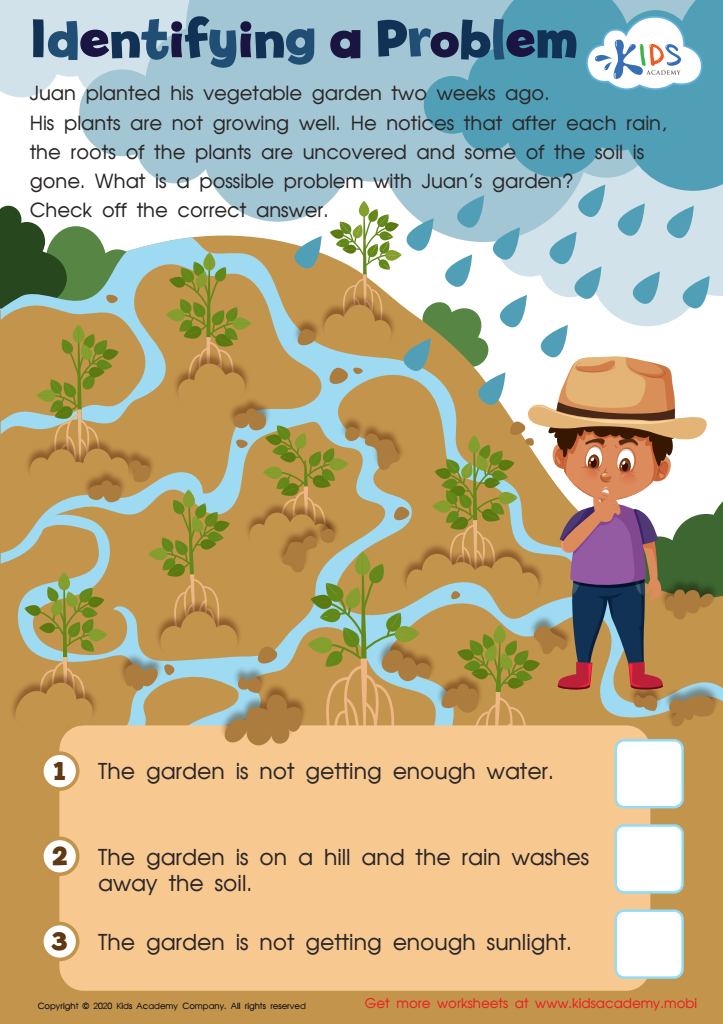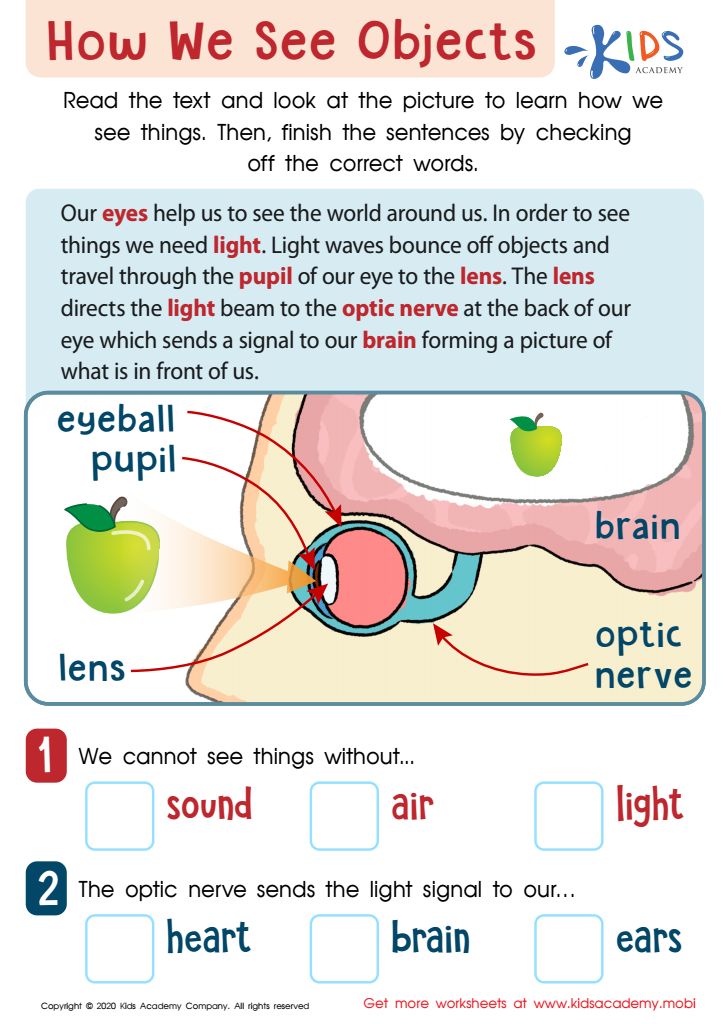Physical Science Worksheets for Ages 4-8
85 filtered results
-
From - To
Explore our engaging Physical Science worksheets designed specifically for children aged 4-8! These interactive resources help young learners grasp foundational concepts in physics and chemistry through fun and accessible activities. From understanding basic forces and motion to exploring the properties of materials, each worksheet promotes curiosity and critical thinking. These printable exercises are perfect for home or classroom use, providing educators and parents with valuable tools to foster a love for science in early learners. Nurture your child's scientific exploration today with our vibrant, age-appropriate worksheets that make learning about the physical world an exciting adventure!


Identifying a Problem Worksheet


Temperature Patterns Worksheet


Lights for Safety Worksheet


Safety Sounds Worksheet


Transparent, Translucent, or Opaque Worksheet


How Light Travels Worksheet


Light Reflections Worksheet


Which Is Brighter? Worksheet


Noisy Park Worksheet


How We Hear Sounds Worksheet


How We See Objects Worksheet


Seeing and Hearing Worksheet


Multiplying 5’s: Telling Temperature Part 2 Worksheet


Multiplying 5’s: Telling Temperature Worksheet


The Water Cycle Worksheet


Forces Worksheet


What Are Solids? Worksheet


Matter Word Search Worksheet


What Is Matter? Worksheet


Multiplying 3s with Force Worksheet


Electric Multiplication Facts Worksheet


Ben Franklin’s Invention Arrays Worksheet


Thomas Edison’s Invention Arrays Worksheet


In Front or Behind: Part 2 Worksheet
Physical Science is crucial for children aged 4-8 as it lays the foundation for their understanding of the world around them. At this age, children are naturally curious, and engaging them in physical science concepts helps to nurture that curiosity. By exploring basic principles such as motion, energy, and magnetism, young learners can develop critical thinking and inquiry skills.
Learning about physical science also directly supports other areas of development. For instance, hands-on experiments like simple chemical reactions or physics activities foster creativity and problem-solving abilities. Importantly, incorporating physical science can enhance language skills as children learn new vocabulary and describe their observations.
Furthermore, understanding the principles of physical science is integral in daily life, from recognizing changes in the weather to understanding gravity. The skills and knowledge gained at this age form a strong foundation for future learning in more complex science subjects. Teaching physical science can also help children develop a sense of wonder about nature and technology, encouraging a lifelong interest in STEM fields.
By prioritizing physical science education, parents and teachers empower children to explore, question, and appreciate the scientific principles that govern their environment, thereby encouraging a curious and informed mindset as they grow.
 Assign to My Students
Assign to My Students





















